- Home
- Patricia Cornwell
The Bone Bed Page 2
The Bone Bed Read online
Page 2
Not so long ago I did get rid of the microdissection system, replacing it with a ScanScope that allows me to view microscopic slides, and I watch Lucy check the monitor, powering it off and on. She picks up the keyboard and turns it over, then moves on to my faithful Leica microscope, which I’ll never give up because there isn’t anything I trust more than my own eyes.
“Pigs and chickens in Washington County, more of the same,” she says, as she continues walking around, staring, touching things, picking them up.
“Farmers pay the fines and then start in again,” she adds. “You should fly with me sometime and get an eyeful of sow stalls, piggeries that cram them in like sardines. People who are awful to animals, including dogs.”
A whoosh sounds, a text message on her iPhone, and she reads it.
“Plumes of runoff going into streams and rivers.” She types a reply with her thumbs, smiling as if whoever sent the message is someone she’s fond of or finds amusing. “Hopefully we’ll catch the assholes in flagrante delicto, shut them.”
“I hope you’re careful.” I’m not at all thrilled with her newfound environmentalist vigilantism. “You start messing with people’s livelihoods and it can get mean.”
“Like it did for her?” She indicates my computer and what I’ve been watching on it.
“I have no idea,” I confess.
“Whose livelihood was Emma Shubert messing with?”
“All I know is she found a tooth two days before she disappeared,” I reply. “Apparently it’s the first one unearthed in a bone bed that’s a rather recent discovery. She and other scientists had just started digging there a few summers ago.”
“A bone bed that may end up the most productive one anywhere,” Lucy says. “A burial ground for a herd of dinosaurs that died all at once, really unusual, maybe unprecedented. It’s an incredible opportunity to piece together entire skeletons and fill a museum, attract tourists and dino devotees and outdoors lovers from all over the world. Unless the area is so polluted nobody comes.”
One can’t read about Grande Prairie and not be aware of the economic importance of its natural gas and oil production.
“Seventeen hundred miles of pipeline carrying synthetic crude from the tar sands of Alberta to refineries in the Midwest and all the way to the Gulf of Mexico,” Lucy says, disappearing inside my bathroom, where there are a Keurig and macchinetta on the counter by the sink. “Pollution, global warming, total ruination.”
“Try the Illy MonoDose. The silver box,” I call out to her. “And make mine a double shot.”
“I believe this is a café Cubano kind of morning.”
“The demerara sugar is in the cabinet,” I let her know, as I finish my last sip of cold coffee and select play again.
What is it I’ve missed? Something.
I can’t shake the gut feeling, and I focus again on the overexposed figure whose features are blown out by the glaring sun. The person doesn’t appear to be very large, could be either a woman or a small man or possibly an older child wearing a sun cap with a veil around the sides and a wide brim that he or she appears to be holding with two fingers of the right hand, perhaps to keep the cap from blowing off. But again, I can’t be certain.
I can’t make out a single feature of the darkly shadowed face or what the person is wearing except for a long-sleeved jacket or baggy shirt and the sun cap, and there is a barely noticeable glint near the right temporal area that suggests glasses, possibly sunglasses. But I can’t be sure of anything. I don’t know much more now than I did when the attachment was e-mailed to me some twelve hours ago.
“I’ve heard nothing further from the FBI, but Benton’s arranged a meeting for later today, assuming I’m out of court in time,” I say, above the macchinetta’s steamy blasts. “More of an informal discussion, since nothing’s happened yet beyond the film clip being sent to me.”
“Something’s happened.” Lucy’s voice sounds from inside the bathroom. “Someone’s ear has been cut off. Unless it’s fake.”
three
THE EXTERNAL PART OF THE SEVERED EAR, THE PINNA, appears to have been cleanly excised from the fascia of the temporalis muscle.
I’ve magnified the image as much as I can without its deconstructing into a blur, and the visible edges of the incised wound appear sharp and regular. I see no paleness or any hint that the incised tissue is everted or collapsed, which is what I might expect in a dismemberment that occurs long after death—if the ear was removed from an embalmed body, from a medical school cadaver, for example. What I’m seeing doesn’t strike me as something like that. The ear and the blood on the newspaper don’t look old.
But I can’t know if the blood is human, and ears are difficult. They aren’t particularly vascular, and it’s not inconceivable one could cut off an ear ante- or postmortem and refrigerate it for weeks, and it might look fresh enough in a photograph to make it impossible for me to determine if the injury happened when the victim was alive or dead.
In other words, the jpg is far from adequate for my purposes, I’m explaining to Lucy. I need to examine the actual ear, to check incised edges for a vital response, to run the DNA in the National DNA Index (NDIS), and also the Combined DNA Index System (CODIS), in the event the profile is connected to someone with a criminal record.
“I’ve already located fairly recent photos of her, plenty of them on various websites, including a few taken of her while she was working in Alberta this summer,” Lucy says from my office bathroom, as we continue to talk loudly enough to hear each other. “But obviously we can’t do a proper one-to-one. I have to adjust for size, angle it just right, but the good news is the overlay is at least helpful because she’s definitely not a rule-out.”
Lucy explains that she’s been comparing the jpg with photographs of Emma Shubert, attempting to overlay images of her ears with the severed one. We can’t rule out a match, but unfortunately a visual comparison isn’t conclusive, either.
“I’ll send you the file,” she adds. “You can show the comparisons to whoever comes to your meeting.”
“Will you be back around five?”
“I wasn’t aware I was invited.” Her voice sounds over the noise of another espresso brewing.
“Of course you’re invited.”
“Along with who else?”
“A couple of agents from the Boston Field Office. Douglas, I think.” I refer to Douglas Burke, a female FBI agent with a confusing name. “I’m not sure who else. And Benton.”
“I’m not available,” Lucy answers. “Not if she’s coming.”
“It really would be helpful if you’d be there. What’s wrong with Douglas?”
“Something is. No, thanks.”
Banished by both the FBI and ATF in her earlier law-enforcement life, my niece’s feelings about the Feds generally aren’t charitable, which can be awkward for me, since my husband is an FBI criminal intelligence analyst, or profiler, and I have a special reservist status with the Department of Defense. Both of us are part of what she resents and disrespects, the Feds who rejected her, who fired her.
Simply put, Lucy Farinelli, my only niece, whom I’ve raised like a daughter, believes rules are for lesser mortals. She was a rogue federal agent and is a rogue technical genius, and my life would feel shattered and vacant if she wasn’t around.
“We’re dealing with somebody pretty clever.” She emerges from the bathroom carrying two shot glasses and a small steel pitcher.
“That’s not a good sign,” I reply. “You rarely think anyone is clever.”
“Someone cunning who is smart on some fronts but too smug to realize how much he doesn’t know.”
She pours espresso, strong and sweet, with a light brown foamy layer on top, coladas that became a habit when she was with ATF’s Miami Field Office years ago, before she got into a bad shooting.
“The address BLiDedwood is rather obvious.” She sets a shot glass and the pitcher next to my keyboard.
“It’s not obvious t
o me.”
“Billy Deadwood.” She spells it out.
“Okay.” I let that sink in. “For my benefit?”
Lucy comes around to my side of the desk and taps the granite countertop behind me, waking up the two video displays on it. Screensavers materialize in vivid red, gold, and blue, the CFC’s and AFME’s crests side by side, a caduceus and scales of justice, and playing cards, pairs of aces and eights, the dead man’s hand that Wild Bill Hickok supposedly was holding during a poker game when he was shot to death in 1876.
“The crest for the AFME.” She indicates the dead man’s hand on the computer screens. “And Wild Bill Hickok, or Billy, was murdered in Deadwood, South Dakota. For your benefit? Yes, Aunt Kay. I just hope it’s not someone in our own backyard.”
“Why would you entertain the slightest suspicion that it might be?”
“Using a temporary free e-mail address that self-destructs or deletes itself in thirty minutes?” Lucy considers. “Okay, not all that unusual, could be anyone. Then this person routes the e-mail to you through a free proxy server, this particular one a high-anonymity type with an unavailable host name. Located in Italy.”
“So no one can respond to the e-mail because the temporary account is deleted after thirty minutes and is gone.”
“That’s the point.”
“And no one can track the IP and trace where the e-mail was actually sent from.” I follow her logic.
“Exactly what the sender is banking on.”
“We’re supposed to assume the e-mail was sent by someone in Italy.”
“Specifically, Rome,” she tells me.
“But that’s a ruse.”
“Absolutely,” she says. “Whoever sent it definitely wasn’t in Rome at six-thirty last night our time.”
“What about the font?” I return to the e-mail and look at the subject line.
ATTENTION CHIEF MEDICAL EXAMINER KAY SCARPETTA
“Is there any significance?” I ask.
“Very retro. Reminiscent of the fifties and sixties, big squarish shapes with rounded corners supposedly evocative of TV sets from that era. Your era,” she teases.
“Please don’t hurt me this early in the morning.”
“Eurostile was created by Italian type designer Aldo Novarese,” she explains, “the font originally made for a foundry in Turin, Nebiolo Printech.”
“And you think this means what?”
“I don’t know.” She shrugs. “They basically manufacture paper and high-end technologically advanced printing machines.”
“A possible Italian connection?”
“I doubt it. I think whoever sent the e-mail to you assumed you couldn’t trace the actual IP,” she says, and I know what’s next.
I know what she’s done.
“In other words,” she continues, “we wouldn’t figure out the actual location it was sent from—”
“Lucy,” I interrupt her. “I don’t want you taking extreme measures.”
She’s already taken them.
“There are a ton of these anonymous freebies available,” she continues, as if she’s not done what I know she has.
“I don’t want you helping yourself to some proxy server in Italy or anywhere else,” I tell her flatly.
“The e-mail was sent to you by someone who had access to Logan’s wireless,” she says, to my astonishment.
“It was sent from the airport?”
“The video clip was e-mailed to you from Logan Airport’s wireless network not even seven fucking miles from here,” she confirms, and it’s no wonder she’s entertaining the possibility it might be someone in our own backyard.
I think about my chief of staff, Bryce Clark, of Pete Marino, and several forensic scientists in my building. Members of the CFC staff were in Tampa, Florida, last week for the International Association for Identification’s annual meeting, and all of them flew back into Boston yesterday around the same time this e-mail was anonymously sent to the CFC.
“At some point prior to six o’clock last night,” Lucy explains, “this person logged on to Logan’s free wireless Internet. The same thing passengers do thousands of times a day. But it doesn’t mean the person who sent the e-mail was physically in a terminal or on a plane.”
Whoever it is could have been in a parking garage, she says, or on a sidewalk, possibly in a water taxi or on a ferry in the harbor, anywhere the wireless signal reaches. Once this person was connected, he created a temporary e-mail account called BLiDedwood @Stealthmail, possibly using word-processing software to write the subject line in Eurostile, and cutting and pasting it into the e-mail.
“He waited twenty-nine minutes before sending it,” Lucy says. “Just a shame he has the satisfaction of knowing it was opened.”
“How would this person know I opened the e-mail?”
“Because he didn’t get a bounce-back nondelivery notification message,” she replies. “Which he would have gotten just seconds before the account self-destructed. He has no reason not to assume the e-mail was received and opened.”
Her tone is different. What she’s saying sounds like a reprimand.
“The bounce-back is instant and automatic for harassing or virus-infected communications sent to the CFC’s main address,” she reminds me. “The purpose is to give the sender the impression that the e-mail couldn’t be delivered. But in fact with rare and unfortunate exception, suspicious e-mails go directly into what I call quarantine so I can see whatever it is and assess the threat level,” she emphasizes, and I realize what she’s getting at. “I didn’t see this particular e-mail because it wasn’t quarantined.”
The rare and unfortunate exception she’s talking about is myself.
“The firewalls I’ve set up recognized the e-mail as legit because of the subject heading Attention Chief Medical Examiner Kay Scarpetta,” she says, as if it’s my fault, and it is. “Something directed to your personal attention doesn’t get spammed or temporarily outboxed in quarantine because that’s been your directive to me. Against my wishes, remember?”
She holds my gaze, and she’s right, but there’s nothing I can do about it.
“You see the consequences of my allowing you to cheat what I’ve secured?” she asks.
“I understand your frustration, Lucy. But it’s the only way a lot of people, particularly police and families, can reach me when they don’t know my direct CFC contact information,” I say what I’ve said before. “They send something to my attention and I certainly don’t want it spammed.”
“It’s just too bad that you’re the one who opened it first,” Lucy says. “Of course, typically Bryce probably would have before you had the chance.”
“I’m glad he didn’t.” My chief of staff is very sensitive and more than a little squeamish.
“Right. He didn’t because he was on his way back from a trip. He and several others had been out of pocket for a week,” Lucy says, as if the timing wasn’t an accident.
“Are you worried that whoever sent the e-mail knows what’s going on at the CFC?” I ask.
“It worries me, yes.”
She rolls a chair close, refills our shot glasses, and I smell the fresh grapefruit scent of her cologne, and I always know when my niece has been on the elevator or has passed through a room. I can close my eyes and recognize her distinctive fragrance anywhere.
“It would be foolish not to consider someone might be paying attention to all of us and what we’re doing,” she is saying. “Someone into games who thinks he’s smarter than God. Someone who gets off on traumatizing people and jerking them around.”
I have no doubt about why she’s been snooping around my office this morning. She stopped by to check on something because she’s overly protective of me, vigilant to a fault. Since Lucy was old enough to walk she’s demanded my attention and watched me like a hawk.
“Are you worried Marino’s involved? That he’s spying on me or trying to hurt me somehow?” I log in to my e-mail.
“He sur
e as hell does stupid things,” she says, as if she has specific ones in mind. “But he’s not that savvy, and what motive could he have? The answer’s none.”
four
I SCROLL THROUGH MY INBOX, LOOKING FOR AN E-MAIL from Bryce or Assistant U.S. Attorney Dan Steward, as I continue to hope my appearance in court won’t be needed.
“What about image clarification? Maybe we can figure out who’s on the jetboat?” I’m talking about the video clip while I’m fretting about Mildred Lott.
“Forget it,” Lucy says.
“It’s so ridiculous,” I mutter, when I find no message that might grant me a reprieve.
It used to be that my autopsy report was enough for the defense, my appearing in court not necessary or even desirable, but since the Melendez-Diaz decision by the U.S. Supreme Court, life has changed for every forensic expert in America. Channing Lott wants to confront his accuser. The billionaire industrialist faces a murder charge for allegedly placing a contract on his now presumed dead wife, and he’s demanded the pleasure of my company this afternoon at two.
“What you see in that video file is all you’ll ever see.” Lucy empties her shot glass. “What you’re looking at is as good as it’s going to get.”
“We’re sure there’s no software out there that might be more sophisticated than what we’re using here at the CFC?” I don’t want to accept it.
“More sophisticated than what I’ve engineered?” She gets up and moves closer to my computer screen. “Nothing holds a candle to what we’ve got. The problem is the footage is hot.”
She clicks the mouse to show me, a heavy gold ring she’s recently started wearing on her index finger, a steel chronograph watch around her wrist. Pausing the recording on the faceless image in the back of the boat, she explains that she made multiple layers of the same video clip, dropping the brightness, using sharpness filters, and it’s hopeless.

 Blow Fly
Blow Fly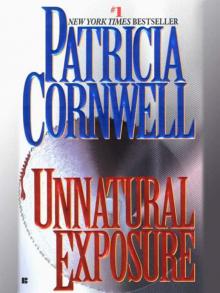 Unnatural Exposure
Unnatural Exposure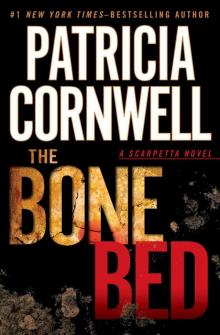 The Bone Bed
The Bone Bed Book of the Dead
Book of the Dead Flesh and Blood: A Scarpetta Novel (Scarpetta Novels Book 22)
Flesh and Blood: A Scarpetta Novel (Scarpetta Novels Book 22)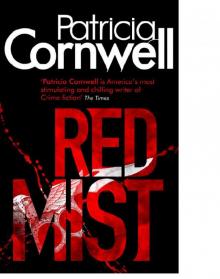 Red Mist
Red Mist Cruel & Unusual
Cruel & Unusual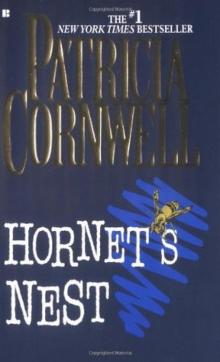 Hornet's Nest
Hornet's Nest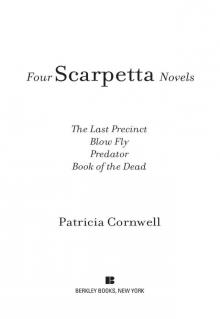 Four Scarpetta Novels
Four Scarpetta Novels Scarpetta's Winter Table
Scarpetta's Winter Table Isle of Dogs
Isle of Dogs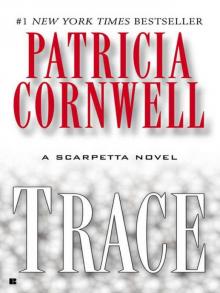 Trace
Trace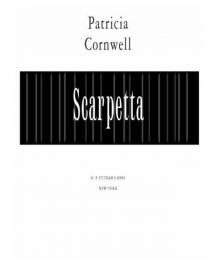 Postmortem
Postmortem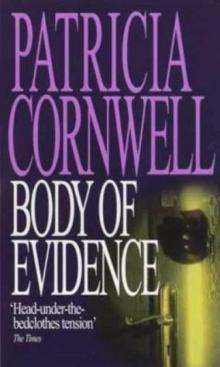 Body of Evidence ks-2
Body of Evidence ks-2 Southern Cross
Southern Cross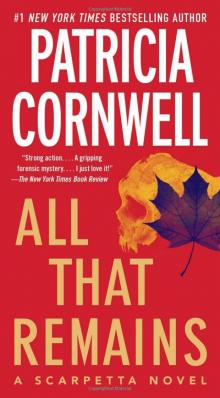 All That Remains
All That Remains Point of Origin
Point of Origin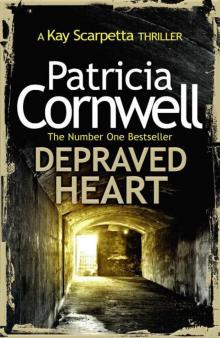 Depraved Heart
Depraved Heart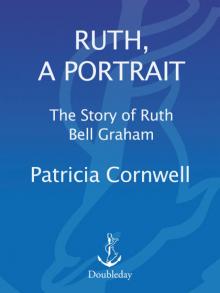 Ruth, a Portrait: The Story of Ruth Bell Graham
Ruth, a Portrait: The Story of Ruth Bell Graham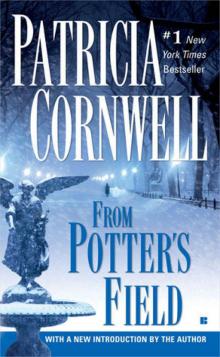 From Potter's Field
From Potter's Field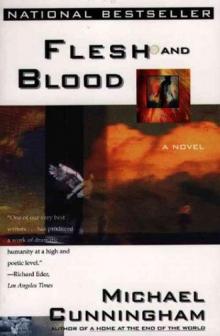 Flesh and Blood
Flesh and Blood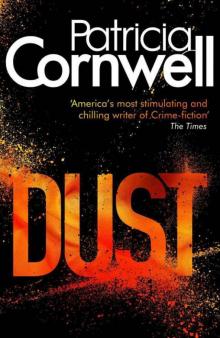 Dust
Dust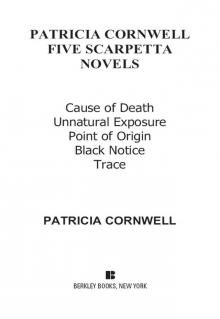 The Body Farm
The Body Farm Port Mortuary
Port Mortuary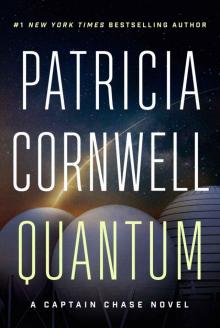 Quantum
Quantum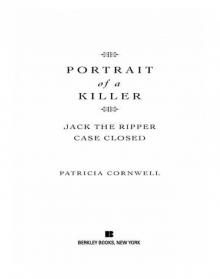 Portrait of a Killer: Jack the Ripper - Case Closed
Portrait of a Killer: Jack the Ripper - Case Closed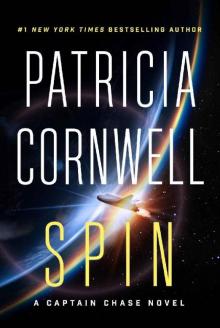 Spin (Captain Chase)
Spin (Captain Chase)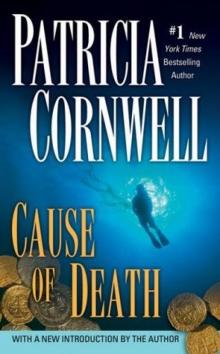 Cause of Death
Cause of Death The Scarpetta Factor
The Scarpetta Factor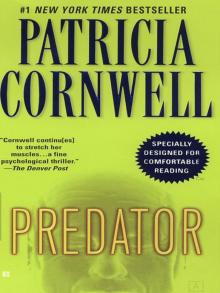 Predator
Predator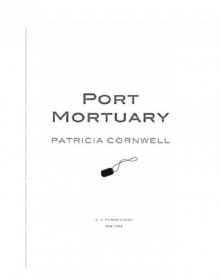 Scarpetta 18 - Port Mortuary
Scarpetta 18 - Port Mortuary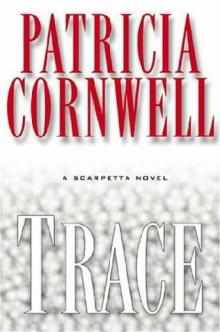 Trace ks-13
Trace ks-13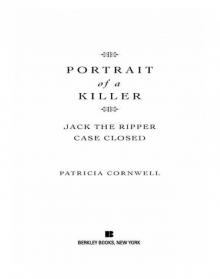 Portrait of a Killer
Portrait of a Killer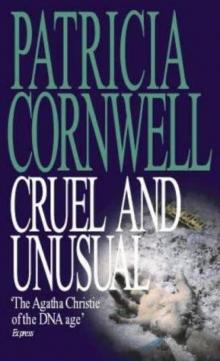 Cruel and Unusual ks-4
Cruel and Unusual ks-4 Cause Of Death ks-7
Cause Of Death ks-7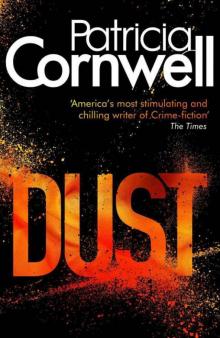 Dust ks-21
Dust ks-21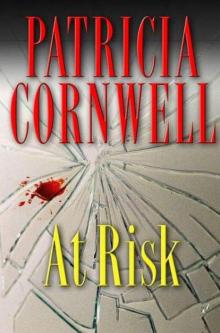 At Risk wg-1
At Risk wg-1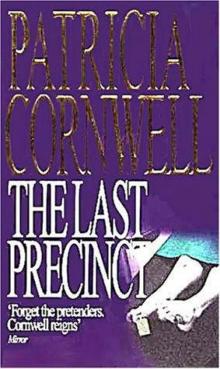 The Last Precinct ks-11
The Last Precinct ks-11 Book of the Dead ks-15
Book of the Dead ks-15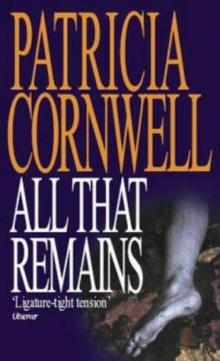 All That Remains ks-3
All That Remains ks-3 Ruth, a Portrait
Ruth, a Portrait Scarpetta's Winter Table (kay scarpetta)
Scarpetta's Winter Table (kay scarpetta)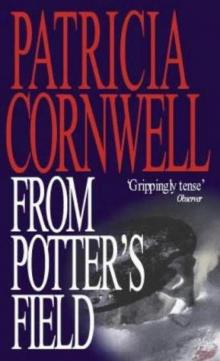 From Potter's Field ks-6
From Potter's Field ks-6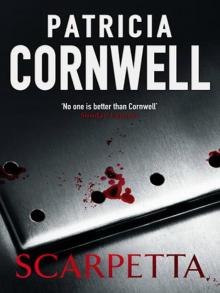 Scarpetta
Scarpetta Isle of Dogs jhabavw-3
Isle of Dogs jhabavw-3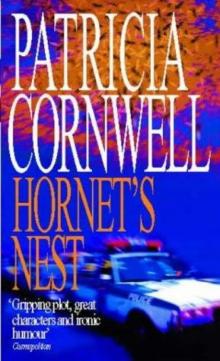 Hornet's Nest jhabavw-1
Hornet's Nest jhabavw-1 The Body Farm ks-5
The Body Farm ks-5 Blow Fly ks-12
Blow Fly ks-12 Post Mortem
Post Mortem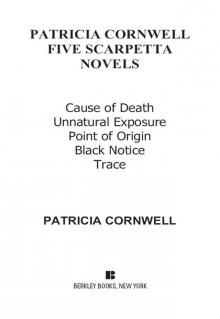 Five Scarpetta Novels
Five Scarpetta Novels Chasing the Ripper (Kindle Single)
Chasing the Ripper (Kindle Single) Point of Origin ks-9
Point of Origin ks-9 Port Mortuary (2010)
Port Mortuary (2010)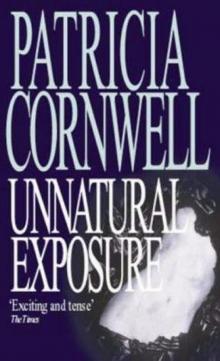 Unnatural Exposure ks-8
Unnatural Exposure ks-8 Southern Cross uhabavw-2
Southern Cross uhabavw-2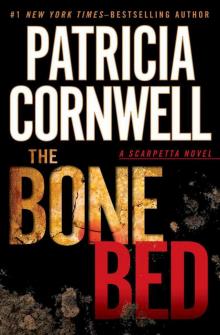 The Bone Bed ks-20
The Bone Bed ks-20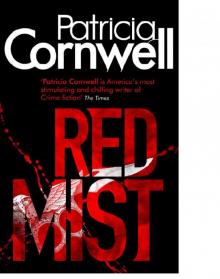 Red Mist ks-19
Red Mist ks-19 Port Mortuary (2010) ks-18
Port Mortuary (2010) ks-18 Predator ks-14
Predator ks-14